Most Wanted Components 2024

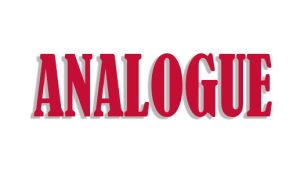
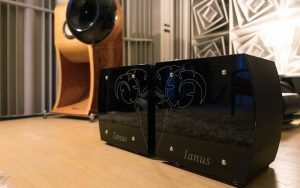
 Aries Cerat Ianus Essentia amplifier ($52,000 for a pair) – The Aries Cerat Ianus Essentia amplifier is a Class-A single-stage, single-ended TriodeFet amp that has no competition as there are no other audio manufacturers that have successfully implemented this groundbreaking approach which is said to achieve extremely high linearity, high voltage gain, high current gain, and very high input impedance. The Essentia amplifier excelled at emotional connection, smoothness, transparency, dynamics, realism, and low-level ambiance in my system. I found Essentia to be the holy grail of amplifiers as it offers the speed and body of the best transistors in combination with the harmonic and musicality offered by SET triodes. The most impressive aspect was the Essentia amplifier’s ability to bring music to life with soul and emotion. The Essentia amplifier now resides in my system as my new reference in amplification. (Mike Girardi)
Aries Cerat Ianus Essentia amplifier ($52,000 for a pair) – The Aries Cerat Ianus Essentia amplifier is a Class-A single-stage, single-ended TriodeFet amp that has no competition as there are no other audio manufacturers that have successfully implemented this groundbreaking approach which is said to achieve extremely high linearity, high voltage gain, high current gain, and very high input impedance. The Essentia amplifier excelled at emotional connection, smoothness, transparency, dynamics, realism, and low-level ambiance in my system. I found Essentia to be the holy grail of amplifiers as it offers the speed and body of the best transistors in combination with the harmonic and musicality offered by SET triodes. The most impressive aspect was the Essentia amplifier’s ability to bring music to life with soul and emotion. The Essentia amplifier now resides in my system as my new reference in amplification. (Mike Girardi)
![]()
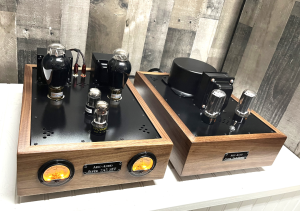
 AricAudio Super 2A3 SET amplifier ($5685) – If you are an aficionado of SET “flea watt” amplifiers, the two-chassis Super 2A3 SET amplifier is one of the finest SET amplifiers I have reviewed in the last five years. Top-notch build quality, an innovative power supply, and topography drive the 2A3 to its ultimate performance, delivering the “magic” of a great SET amplifier. (reviewed here Terry London)
AricAudio Super 2A3 SET amplifier ($5685) – If you are an aficionado of SET “flea watt” amplifiers, the two-chassis Super 2A3 SET amplifier is one of the finest SET amplifiers I have reviewed in the last five years. Top-notch build quality, an innovative power supply, and topography drive the 2A3 to its ultimate performance, delivering the “magic” of a great SET amplifier. (reviewed here Terry London)
![]()

 Coda Technologies S5.5 amplifier ($6400) – The S5.5 is a 50/100 watt Class A amplifier that can drop up to 100 amperes of current into an eight or 4-Ohm load. It offers beautiful tonality/colors with total transparency reviling all the micro-details of the music with an effortless control over the speakers it’s driving. I nick-named the S5.5 the “Petite Beast” because its small size belies the power/control it brings to your system. (reviewed here Terry London)
Coda Technologies S5.5 amplifier ($6400) – The S5.5 is a 50/100 watt Class A amplifier that can drop up to 100 amperes of current into an eight or 4-Ohm load. It offers beautiful tonality/colors with total transparency reviling all the micro-details of the music with an effortless control over the speakers it’s driving. I nick-named the S5.5 the “Petite Beast” because its small size belies the power/control it brings to your system. (reviewed here Terry London)
![]()
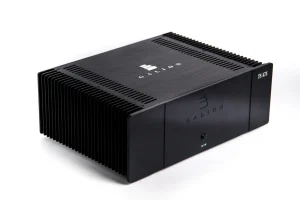
 Galion Audio TS A75 amplifier ($1495) – This is my pick for budget amplifier of the year. The A75 uses quality internal parts and high-level construction not commonly found at this price point. Most importantly, this amplifier offers a grain-less tube-like presentation with excellent control of the bass frequencies. It reminded me very much of a high-quality EL-34 tube-based amplifier with enough power to drive virtually any speaker easily without strain. (reviewed here Terry London)
Galion Audio TS A75 amplifier ($1495) – This is my pick for budget amplifier of the year. The A75 uses quality internal parts and high-level construction not commonly found at this price point. Most importantly, this amplifier offers a grain-less tube-like presentation with excellent control of the bass frequencies. It reminded me very much of a high-quality EL-34 tube-based amplifier with enough power to drive virtually any speaker easily without strain. (reviewed here Terry London)

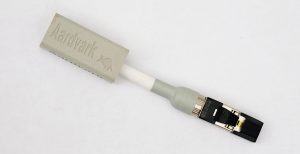
AARDVARK ETHERNET ISOLATOR – It has been just about a year since I reported on the Aardvark Ethernet Isolator (here ), and I have continued to enjoy its benefits up to this point. Nonetheless, the manufacturer couldn’t just rest on his laurels, so, having renamed the original Isolator “The Classic,” he has now introduced the new, improved Aardvark “Ultra.” I only just received the new “Ultra” version a few days ago, so a full review will have to wait to allow for additional burn-in and listening. That said, my initial impressions are very positive indeed. Sonically, the Ultra seems to put more “meat” on the bones, adding density, color, and weight to what is already a strikingly clean sonic picture. The new version involves more actual materials and labor (these babies are truly hand-crafted) and will cost roughly double the price of the Classic. Is it worth the extra coin? Time will tell. Stay tuned. Review forthcoming. (Ron Cook)
![]()
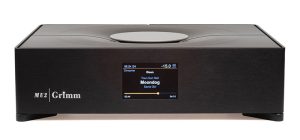
Grimm Audio MU2 – Streamer, DAC, Roon Core/Server and Preamplifier ($17,500)/reviewed here):
The MU2 is an all-in-one digital front end. It has an incredibly quiet background and a deep, wide, layered soundstage with stunning holographic reality. Grimm’s in-house engineers created noise shaping and filtering technology to allow the micro details and fullness of sound to come to life. The pre-amplifier is so good that I do not use another one in the chain. The MU2 is great to look at with an attractive industrial design. I love this device, and it is playing in my home as I write this. (Reviewed here John Hoffman)
![]()
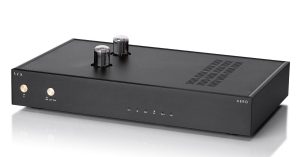
 Linear Tube Audio Aero DAC ($3950) – It took LTA a year of development to bring their first DAC to market. Based on a modified David Berning’s ZOTL circuit, the tube-based Aero delivers one of the most analog presentations of the digital bits of any DAC on the market today. This unit boasts a three-dimensionality and beautiful timbre normally associated with LP playback. (reviewed here Terry London)
Linear Tube Audio Aero DAC ($3950) – It took LTA a year of development to bring their first DAC to market. Based on a modified David Berning’s ZOTL circuit, the tube-based Aero delivers one of the most analog presentations of the digital bits of any DAC on the market today. This unit boasts a three-dimensionality and beautiful timbre normally associated with LP playback. (reviewed here Terry London)
![]()

Linear Tube Audio Aero DAC (Standard $3950/with Ray Tubes RESERVE 6SN7 tubes $4400) – When my fellow Stereo Times writer, Terry London, told me how good the very first DAC offered by Linear Tube Audio was my thought was “that’s nice.” Then, I dismissed it because it did not “cost enough.” For that, I award myself a simultaneous Homer Simpson forehead slap and a Gibbs slap. The stock DAC outperforms many, costing a lot more, and the Ray RESERVE tubes take it to another level. Intricate details and nuances are presented in a musical, not clinical fashion. There is a hint of tube warmth, but it is not overdone. The Aero employs an R2R ladder DAC with no oversampling or digital filters. It is the first and only DAC in the world to use a Class-A ZOTL output stage. I thoroughly enjoy mine. It is completely at home, with components costing significantly more. (Don Shaulis)
![]()
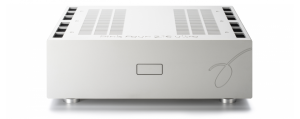
 Pink Faun 2.16 Ultra Streamer with Ultra USB card ($34,500) – The 2.16 Ultra digital playback system is the accumulation of years of experience with digital and analog combined with Pink Faun’s groundbreaking OCXO clock technology. The Pink Faun 2.16 Ultra provides a unique listening experience that is separate and apart from almost any competing digital playback system I have had. Combining the main strengths of an ultralow noise floor, higher order of microdynamic contrasts, lack of grain, visceral dynamics, a natural sense of music effortlessly flowing, and a newfound fluidity in the music, I found the Pink Faun 2.16 Ultra to be a completely immersive listening experience. The Pink Faun 2.16 Ultra made most of the song’s ability to draw you into the music and place the performers in your listening room. Based on the comparison made at a fellow reviewer’s system (Moreno Mitchell), the Pink Faun 2.16 Ultra showed that digital playback has come of age and, to my ears, exceeds the performance of the best turntables. The Pink Faun 2.16 Ultra now resides in my system as my new reference in bit-perfect digital playback. (Mike Girardi)
Pink Faun 2.16 Ultra Streamer with Ultra USB card ($34,500) – The 2.16 Ultra digital playback system is the accumulation of years of experience with digital and analog combined with Pink Faun’s groundbreaking OCXO clock technology. The Pink Faun 2.16 Ultra provides a unique listening experience that is separate and apart from almost any competing digital playback system I have had. Combining the main strengths of an ultralow noise floor, higher order of microdynamic contrasts, lack of grain, visceral dynamics, a natural sense of music effortlessly flowing, and a newfound fluidity in the music, I found the Pink Faun 2.16 Ultra to be a completely immersive listening experience. The Pink Faun 2.16 Ultra made most of the song’s ability to draw you into the music and place the performers in your listening room. Based on the comparison made at a fellow reviewer’s system (Moreno Mitchell), the Pink Faun 2.16 Ultra showed that digital playback has come of age and, to my ears, exceeds the performance of the best turntables. The Pink Faun 2.16 Ultra now resides in my system as my new reference in bit-perfect digital playback. (Mike Girardi)
![]()

 Pink Faun 2.16 Ultra Streamer/Server ($35,000) – Since the evolution of digital streaming technology, there has been a plethora of streaming and server devices on the market. Having the opportunity to own and audition a number of these audio streamers and servers, the Pink Faun 2.16 Ultra proved to be heads and tails above the rest. Pink Faun’s motto is “The symbiosis between the technical advantages of the digital and the musicality of the analogue domain exploring new territories of hi-fidelity.” This motto perfectly defines the essence of the Pink Faun 2.16 Ultra. The build quality and stunning high resolution/detail quality sound surpassed every front-end component I have experienced. This awesome Roon Ready streamer/server can be custom-ordered with numerous options available to fit audiophiles’ needs and desires. A must-have. (Moreno Mitchell)
Pink Faun 2.16 Ultra Streamer/Server ($35,000) – Since the evolution of digital streaming technology, there has been a plethora of streaming and server devices on the market. Having the opportunity to own and audition a number of these audio streamers and servers, the Pink Faun 2.16 Ultra proved to be heads and tails above the rest. Pink Faun’s motto is “The symbiosis between the technical advantages of the digital and the musicality of the analogue domain exploring new territories of hi-fidelity.” This motto perfectly defines the essence of the Pink Faun 2.16 Ultra. The build quality and stunning high resolution/detail quality sound surpassed every front-end component I have experienced. This awesome Roon Ready streamer/server can be custom-ordered with numerous options available to fit audiophiles’ needs and desires. A must-have. (Moreno Mitchell)
![]()
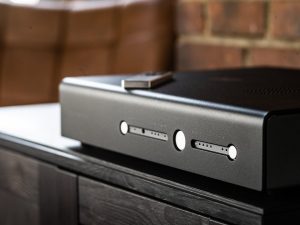
Schiit Yggdrasil ($2,699.99) – More is Better! Well, I have built my system around the Yggdrasil, and the latest variant is so perfect to me. I love how it dropped the noise floor compared to the LIM and OG (A2) variants, and how it seems to add a nice bit of extension in the higher frequencies in a very smooth way. Some may consider it a bit “calm” but I enjoy how exciting and incisive it can be when called upon to do so. I’ve heard far more expensive dac options in different systems and I always return to mine with a happy smile on my face. I think the Yggy MIB has a lot to do with this joy. A wonderful DAC at a wonderful price, slated to receive some upgrades (hopefully next year. Rob Dockery)
![]()
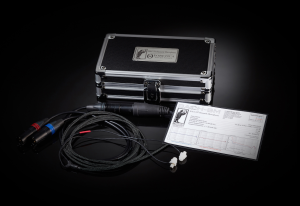
 Theoretica Applied Physics BACCH4Mac Pro Stereo Purifier ($8800 with room correction)
Theoretica Applied Physics BACCH4Mac Pro Stereo Purifier ($8800 with room correction)
Not only did the BACCH4Mac earn my vote for this year’s Publisher’s Choice, but I also nominated it for Best Stereo Enhancer since the invention of stereo. I’ve tried to think repeatedly over the past 30-plus years about what has created such an incredible life-like performance. Nothing has surpassed the BACCH4Mac.
In the early 2000s, I heard about the merits of crosstalk cancellation while experimenting with Ambiophonics’s designer, Ralph Glasgal, in his northern NJ laboratory.
I have lived and had periods of great success with the highly touted Tact Room Correction software until the German-made Behold electronics replaced it 20 years ago [The Behold remains my reference for nearly twenty years now with zero apologies.] I disconnected the Behold room correction software maybe 15 years ago when I suddenly discovered my room sounded more realistic with well-thought-out room treatment rather than room correction. The experience gained swore me off of digital gadgets and gizmos for decades. Until now.
After installing the BACCH4Mac in my system, Prof. Choueiri made his adjustments and measurements via telephone and the BACCH4Mac supplied software. After no more than 90 minutes of adjustments, I was ready for a listen. It’s been six months now, and I remain in awe. At once, my room felt like the corners, ceiling, and floor melted away. A newfound coherency flooded my space. The improved harmonic purity emitting from the Sunny Majestic horn loudspeakers was staggeringly obvious and immediate. In my system and with continued burn-in (400 hours), the purity level has become as rewarding as the startling wrap-around 3-D (kaleidoscope-like) effect. Still today, it remains profound but never exaggerated. Who knew that removing crosstalk cancellation, comb filtering, and employing room correction could be so powerfully intoxicating? (Review in the works – Clement Perry)
![]()

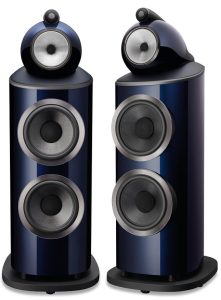
 B&W 801 D4 Signature ($55,000/pair) – After years of hearing that the Classe’ Audio electronics that I own (Delta PRE and MONOs) are a synergistic match with the B&W 801 D4 loudspeakers, I finally had the pleasure of hearing them together at last year’s AXPONA. Better still, these were the B&W 801 D4 Signatures. The Signatures have improved internal bracing, upgraded parts in the crossovers, and better low-end performance, thanks to a flared metal, downward-firing port. Visually, the Signatures also come in two upgraded colors: Midnight Blue Metallic and California Burl Gloss. They’re as stunning to look at as they are to listen to. Speaking of listening, hearing my current fave evaluation track, Pathway to Glory by Loggins & Mesina from the album “Full Sail,” was a revelation for me. Listening to this song through a system like this is why I even bother with high-end audio in the first place. (Dave Thomas)
B&W 801 D4 Signature ($55,000/pair) – After years of hearing that the Classe’ Audio electronics that I own (Delta PRE and MONOs) are a synergistic match with the B&W 801 D4 loudspeakers, I finally had the pleasure of hearing them together at last year’s AXPONA. Better still, these were the B&W 801 D4 Signatures. The Signatures have improved internal bracing, upgraded parts in the crossovers, and better low-end performance, thanks to a flared metal, downward-firing port. Visually, the Signatures also come in two upgraded colors: Midnight Blue Metallic and California Burl Gloss. They’re as stunning to look at as they are to listen to. Speaking of listening, hearing my current fave evaluation track, Pathway to Glory by Loggins & Mesina from the album “Full Sail,” was a revelation for me. Listening to this song through a system like this is why I even bother with high-end audio in the first place. (Dave Thomas)
![]()
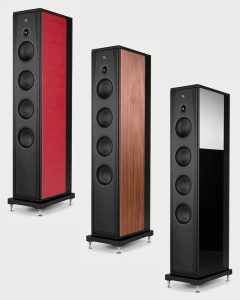
 Rosso Fiorentino ARNO-40 loudspeakers ($15,000) – This relatively slim five-driver vented small floor-standing speaker is based on a very innovative baffle design regarding materials/construction, and all the drivers used in the ARNO-40 are designed and built in-house. CEO and designer Francesco Rubenni must have great ears for what live music sounds like because the ARNO-40 creates the illusion of beautiful live music at a breathtaking level. (reviewed here) (Terry London)
Rosso Fiorentino ARNO-40 loudspeakers ($15,000) – This relatively slim five-driver vented small floor-standing speaker is based on a very innovative baffle design regarding materials/construction, and all the drivers used in the ARNO-40 are designed and built in-house. CEO and designer Francesco Rubenni must have great ears for what live music sounds like because the ARNO-40 creates the illusion of beautiful live music at a breathtaking level. (reviewed here) (Terry London)
![]()

 Stein Music Topline Bob Horn/Linesource ($275k without subs) Well, my listening space is not big by any standard (21′ by 17′), but its 8 ft tall ceiling would accommodate the Topline Bob (as it’s about 7’9″). I can dream of what life would be like with a pair of these monsters in my space. However, the Model L (photo above, shown in the back), may do the trick as it’s only half the size, weight and price. A loudspeaker that I am looking forward to having in my listening space. Stay tuned. Clement Perry
Stein Music Topline Bob Horn/Linesource ($275k without subs) Well, my listening space is not big by any standard (21′ by 17′), but its 8 ft tall ceiling would accommodate the Topline Bob (as it’s about 7’9″). I can dream of what life would be like with a pair of these monsters in my space. However, the Model L (photo above, shown in the back), may do the trick as it’s only half the size, weight and price. A loudspeaker that I am looking forward to having in my listening space. Stay tuned. Clement Perry
![]()
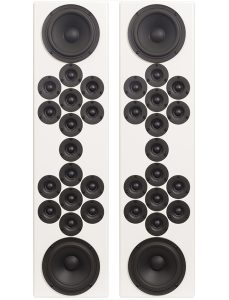
 Tekton Design Encore Monitor ($3000) – I own a pair of Ulfbertht and have reviewed five different Tekton speaker models. All the Tekton Design speakers offer amazing performance at very reasonable price points. The Encore Monitor, which reminds me of a miniature Moab, is another model based on Eric Alexander’s patented array of drivers arranged in a D’Appolito design flanked with top and bottom woofers. It’s hard to believe the level of performance this $3000 speaker produces when set up correctly. Another surprise was a new, at least in this model, a touch of the classical musicality of the great Franco Serblin’s classic Sonus Faber designs without sacrificing the speed, dynamics, and clarity of the Tekton house sound. (review forthcoming – Terry London)
Tekton Design Encore Monitor ($3000) – I own a pair of Ulfbertht and have reviewed five different Tekton speaker models. All the Tekton Design speakers offer amazing performance at very reasonable price points. The Encore Monitor, which reminds me of a miniature Moab, is another model based on Eric Alexander’s patented array of drivers arranged in a D’Appolito design flanked with top and bottom woofers. It’s hard to believe the level of performance this $3000 speaker produces when set up correctly. Another surprise was a new, at least in this model, a touch of the classical musicality of the great Franco Serblin’s classic Sonus Faber designs without sacrificing the speed, dynamics, and clarity of the Tekton house sound. (review forthcoming – Terry London)
![]()
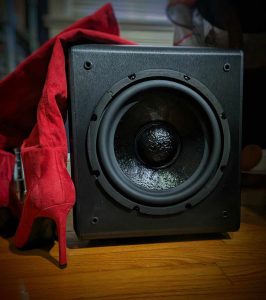
Vanguard Caldera 10″ Power Active Compact Subwoofer ($199) – Priced at an entry-level sum, the Vanguard Caldera 10 sub is far from a boom-boom box – it’s quite musical, pairing well with all three stand-mounted speaker models when reviewed. With its 200 watts of power, a rating of 115v/60Hz, and an impedance of 4 Ohms, while a surprise, it really shouldn’t have been. I’ve reviewed enough products from the hand of Viet Nguyen to expect darn good sound. In combination with Veri-Fi Audio’s Mark Schifter’s ability to transform an idea into a physical product and handsome form factor, great-looking and sounding audio gear follows. (reviewed here – Greg Voth)
![]()
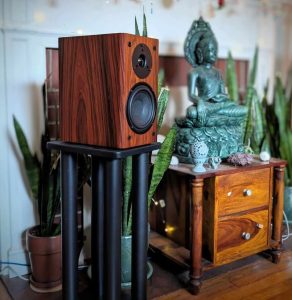
Vanguard Scout monitors – ($299) – I listen at my desk with the Vanguard Scouts daily, using a pair of Vera-Link TWS Bluetooth amps. The Vanguard Scout’s soft dome tweeter resolves highs while maintaining a smooth sound that’s low in distortion, and their paper cone woofer has a natural and lively sound with a slightly warm midrange that’s perfect for vocals. The Scouts play with enough realism and musicality to scratch that itch. It is a perfect introduction to great sound at a stunningly affordable price. (reviewed here – Greg Voth)
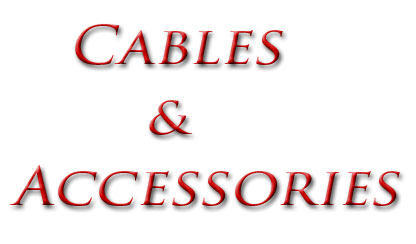
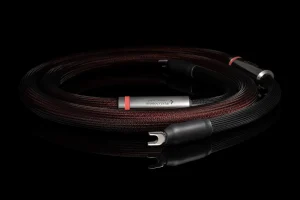
 Albedo Signature Metamorphosis Monocrystal Speaker cableS 2.5M ($32,500) – Audio cables are plentiful throughout the audio industry. The numerous cables available provide the audio consumer with many options. No one can (in my opinion) claim that their product is the absolute best. However, with that said, out of the many different models I have listened to in my system, the Albedo Signature Metamorphosis Monocrystal Speaker Cables allowed my audio system to present the best next-to-live audio presentation I have experienced to date. This is evident by the speed, width, depth, and dynamics, along with a realistic output of whatever recording is played. The 2.5m Albedo Signature Speaker Cables are not light in weight. Still, they are very flexible, with an extreme quality build of multiple ultra-high purity silver ribbons and round wires of different diameters. I can honestly say that the Albedo Signature Metamorphosis Monocrystal Speaker Cables are the best I have heard in my system. Thus, my vote for Most Wanted 2024. (reviewed here Moreno Mitchell)
Albedo Signature Metamorphosis Monocrystal Speaker cableS 2.5M ($32,500) – Audio cables are plentiful throughout the audio industry. The numerous cables available provide the audio consumer with many options. No one can (in my opinion) claim that their product is the absolute best. However, with that said, out of the many different models I have listened to in my system, the Albedo Signature Metamorphosis Monocrystal Speaker Cables allowed my audio system to present the best next-to-live audio presentation I have experienced to date. This is evident by the speed, width, depth, and dynamics, along with a realistic output of whatever recording is played. The 2.5m Albedo Signature Speaker Cables are not light in weight. Still, they are very flexible, with an extreme quality build of multiple ultra-high purity silver ribbons and round wires of different diameters. I can honestly say that the Albedo Signature Metamorphosis Monocrystal Speaker Cables are the best I have heard in my system. Thus, my vote for Most Wanted 2024. (reviewed here Moreno Mitchell)
![]()
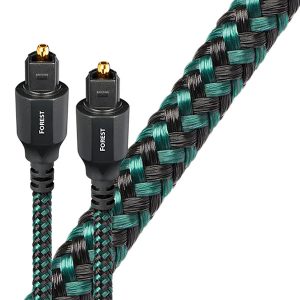
 AudioQuest Forrest 3M Digital Optical Cable ($89.95/3m) – Popping this inexpensive little optical dig cable between my 65” LG TV and Classe’ Delta PRE did wonders for the audio of the Music Choice channels of my Xfinity cable system. I spend hours each day with the Classical channel playing in the background and, on more than a few occasions, have found myself moving from my desk to the sofa to enjoy some music. (Dave Thomas)
AudioQuest Forrest 3M Digital Optical Cable ($89.95/3m) – Popping this inexpensive little optical dig cable between my 65” LG TV and Classe’ Delta PRE did wonders for the audio of the Music Choice channels of my Xfinity cable system. I spend hours each day with the Classical channel playing in the background and, on more than a few occasions, have found myself moving from my desk to the sofa to enjoy some music. (Dave Thomas)
![]()
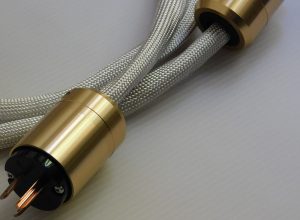
 Dynamic Design Constellation Cables – Constellation VE Power Cord 1.5M – $2,500, Voyager Digital Power Cord 1.5M – $2,500 – Since 2003, personal preference has long guided me to enjoy Dynamic Design cables as a reference in my system. Their consistency of performance, the way they capture tonal harmonics, their capabilities at the frequency extremes, realistic transient reproduction, and their ability to pull me into a more enjoyable music experience always do it for me. Dynamic Designs power cords consistently perform across the board and let you hear what’s happening in your stereo. That’s precisely what the Constellation VE Power Cords and Voyager Digital Power Cords do. With their level of excellence performing in my system, build and parts quality, and level of sonic consistency, I highly recommend these cables for anyone seeking to push their systems to their design limits! (Mike Wright)
Dynamic Design Constellation Cables – Constellation VE Power Cord 1.5M – $2,500, Voyager Digital Power Cord 1.5M – $2,500 – Since 2003, personal preference has long guided me to enjoy Dynamic Design cables as a reference in my system. Their consistency of performance, the way they capture tonal harmonics, their capabilities at the frequency extremes, realistic transient reproduction, and their ability to pull me into a more enjoyable music experience always do it for me. Dynamic Designs power cords consistently perform across the board and let you hear what’s happening in your stereo. That’s precisely what the Constellation VE Power Cords and Voyager Digital Power Cords do. With their level of excellence performing in my system, build and parts quality, and level of sonic consistency, I highly recommend these cables for anyone seeking to push their systems to their design limits! (Mike Wright)
![]()
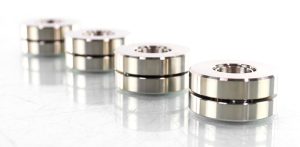
Finite Elemente Cerabase Slimline Isolation Footers (Set of 3 $519/Set of 4 $679) – These footers can be used loose or attached to equipment via a center mounting hole. I wish I could wax poetic about the sonic characteristics of these footers, but their appeal to me is for other reasons. Some of my equipment is too heavy, and/or I have too little shelf clearance to do easy A/B testing. I am past kneeling on the floor, trying to lift one side of a heavy piece of equipment to slide the footers into their proper place while avoiding the stock footers. I permanently mount the Slimlines, enjoy their ease of use, and trust their brand reputation. And, at only about 0.8” tall, they fit in places where other footers will not. Their optimum weight range is 44-330 pounds. A set of three will support 825 pounds, and a set of four will support 1,100 pounds. They are supplied with M6 and M8 bolts. I have four sets installed. (Don Shaulis)
![]()
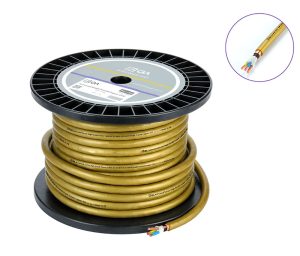
Grand Activation AC-55 ($150 per meter) – This wonderful bulk cable can be had at a reasonable cost and performs much better than expected at the cost. What I like about the AC-55 is its sense of grip and control in the lower frequencies while sounding very natural, veering ever too slightly into the slightly dry territory. This can be good for some systems that tighten the bass and remove some digititus over lesser cables. My tests were with the IEGO Male and Furutech FI-50NCF Female plug, both Rhodium plated (copper base). This is a wonderful cable for the entry fee. (Rob Dockery)
![]()
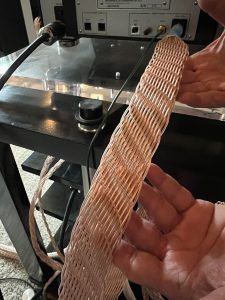
Jena Labs AES/EBU Njord digital cable ($7050) – I had gone through scores of the most highly regarded digital cables. I had come to the conclusion that all offered excellent performance with only slight nuances/differences in their overall presentation. When I inserted the AES/EBU Njord digital cable in my reference system, every parameter of sonic qualities (spatiality-dynamics-tonality) improved qualitatively to a higher level. It also worked the same magic in three other systems with different digital front ends (reviewed here). (Terry London)
![]()
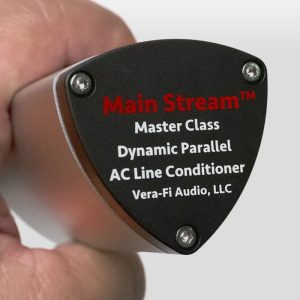
Main Stream Master Class Dynamic Parallel AC Line Conditioner ($239) – The Main Stream Master Class Dynamic Parallel AC Line Conditioner brought me ever closer to the music while providing a more nuanced performance. As I repeatedly played some of the songs for a closer listen during my review, I heard farther into the music, with the most minor details coming easier. Percussive transients, however small, seemed less veiled, and the background was quieter and darker. As more complex images entered the stage, the instruments grew texturally more interesting. The Main Stream did a stellar job during my summer review, successfully removing AC grunge. The Main Stream assisted in delivering a smile-inducing listen, with added black in the quiet passages and a boost to instrumental impact in the louder ones. (Greg Voth)
![]()
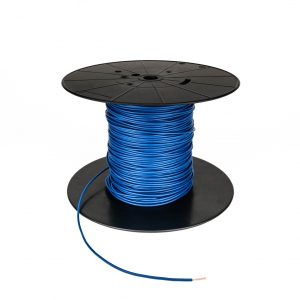
Mundorf Angelique Stranded wire ($15.48 per meter)
The secret is out; this wire is amazing in every case I’ve used it. This includes building AC power cables, internal DC wiring of power supplies, etc. The stranded variant presents a less veiled sound and extended frequency response in the higher frequencies. It also sounds less “weighty” than the solid core iteration, meaning it can make a system that sounds “too thick” more nimble and open if used in critical areas. Overall, very easy to work with as well. (Rob Dockery)
![]()
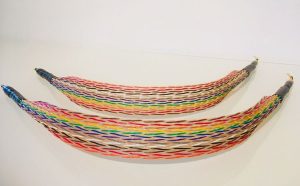
 Pine Tree Audio Rainbow Ribbon speaker cables ($170) & HexaBraid silver-plated copper speaker wire / HexaBraid XLR interconnects ($440-$240) – Jesse Allain is the owner of Pine Tree Audio and is an artesian designer and builder of high-performing speaker cables and interconnects that he sells for remarkable small amounts of money. Based on a comparison in my systems, the Pine Tree cables at least equaled and sometimes surpassed cables that cost a couple of thousand dollars more. (review forthcoming – Terry London)
Pine Tree Audio Rainbow Ribbon speaker cables ($170) & HexaBraid silver-plated copper speaker wire / HexaBraid XLR interconnects ($440-$240) – Jesse Allain is the owner of Pine Tree Audio and is an artesian designer and builder of high-performing speaker cables and interconnects that he sells for remarkable small amounts of money. Based on a comparison in my systems, the Pine Tree cables at least equaled and sometimes surpassed cables that cost a couple of thousand dollars more. (review forthcoming – Terry London)
![]()
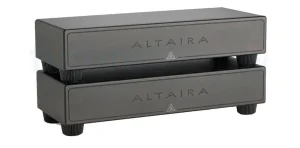
Shunyata Research ALTAIRA Chassis Ground Hub ($2998) – I added the ALTAIRA chassis ground hub to my system and upgraded every component connected to it. The ALTAIRA hub enhanced every element of music that I prize. Chassis grounding provided a quieter background and a sharpening of focus, revealing details farther into the music. Musical instruments had extended harmonics. Vocals had more clarity. I heard more of “why” I listen to music. The purity and detail were more engaging and less fatiguing. Nuances became more pronounced. The ALTAIRA chassis grounding hub is now an essential part of my system. I would not want to be without it. (Reviewed here Don Shaulis)
![]()

 Synergistic Research Active Grounding Block SX ($2,995) – The Active Ground Block SX is a technological trickle-down of the cost-no-object Galileo Active Ground Block and new refined technologies found in the Synergistic Research linear power supply. Grounding all of my system components and engaging the Active Grounding Block SX paid dividends in the truth of timber and sonic purity. Active Ground Block SX reduced the background noise floor and signal compression to a much higher level than the previous iterations. Each instrument’s image outline and location were also more defined within the Active Ground Block SX soundstage. You can choose many grounding blocks for your equipment, but I haven’t encountered a product that is as cost-effective and takes up little to no space as the Synergistic Research Active Ground Block SX. (Mike Girardi)
Synergistic Research Active Grounding Block SX ($2,995) – The Active Ground Block SX is a technological trickle-down of the cost-no-object Galileo Active Ground Block and new refined technologies found in the Synergistic Research linear power supply. Grounding all of my system components and engaging the Active Grounding Block SX paid dividends in the truth of timber and sonic purity. Active Ground Block SX reduced the background noise floor and signal compression to a much higher level than the previous iterations. Each instrument’s image outline and location were also more defined within the Active Ground Block SX soundstage. You can choose many grounding blocks for your equipment, but I haven’t encountered a product that is as cost-effective and takes up little to no space as the Synergistic Research Active Ground Block SX. (Mike Girardi)
![]()
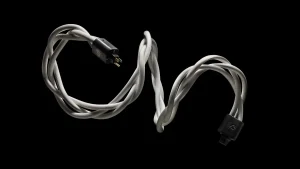
 QSA Lanedri Ultimatum Infinity AC Cords ($18k ea) – The QSA Ultimatum Infinity AC cords are massively built using three independent and interwoven cables for each positive, negative, and ground connection. One AC cord weighs nearly 12 lbs. The weight alone may explain the incredible performance based on the amount of specialized QSA treatment used. If anyone already knows how powerfully effective the minuscule-sized QSA-treated fuses are, you, too, might understand why the QSA Lanedri UI is the most dynamically charged and musically infused AC cable I’ve heard. The QSA Lanedri Ultimatum Infinity AC cord proved equally adept at fleshing out musical textures and excelling at initial transients as it is at producing the deepest, most taut bass my system has ever produced.
QSA Lanedri Ultimatum Infinity AC Cords ($18k ea) – The QSA Ultimatum Infinity AC cords are massively built using three independent and interwoven cables for each positive, negative, and ground connection. One AC cord weighs nearly 12 lbs. The weight alone may explain the incredible performance based on the amount of specialized QSA treatment used. If anyone already knows how powerfully effective the minuscule-sized QSA-treated fuses are, you, too, might understand why the QSA Lanedri UI is the most dynamically charged and musically infused AC cable I’ve heard. The QSA Lanedri Ultimatum Infinity AC cord proved equally adept at fleshing out musical textures and excelling at initial transients as it is at producing the deepest, most taut bass my system has ever produced.
The Lanedri Ultimatum Infinity AC cord is the only cable I have owned that surpasses any cable I’ve heard by a wide margin (speaker cables and interconnects included) and, therefore, sits in a new category. I suspect this unique level of performance is unveiled whenever you connect QSA’s technology directly to a power source.
I’ve lived happily with the QSA Lanedri Ultimatum Infinity speaker cables for nearly two years. They’re even better than what I wrote about due to upgrades its designer, Anas Lanedri, has discovered. However, adding a single QSA Lanedri UI AC cord (placed at my Kemp M100 AC conditioner) took my system sonically further than anything I’ve heard. Almost immediately (but certainly after 400 hours of burn-in), unbelievable dynamics sprang forth, coupled with a supernatural delicacy, flow, and control usually reserved for only the most coveted components. Review in the works. (Clement Perry)
![]()
 QSA Duplex, IEC adapter, Jitter AC adapter, and AC Breaker (prices vary) – As big a fan as I am of the original QSA fuses, their newer products have also made a name for themselves. Going first with the Gold level QSA Duplex ($6,500) increased the realism, speed, and PRaT while lowering the noise floor noticeably. Placing the Gold IEC and Jitter plugs on my digital front end’s AC cord further improved its natural dynamics and speed while providing more delicacy and an analog-ish feel. The more QSA goes into my system, the more I notice how little stress there is and how natural the overall performance becomes. One thing’s certain: the noise doesn’t stop trying to get in. The QSA technology proves distortions will not only persist but always exist. However, QSA products, such as their Duplex, helped lower distortions further away from my dedicated sources. I reported on the improvements rendered by installing the QSA Silver Jitter plugs in 2023 (reviewed here); however, adding the QSA IEC adapters to my front-end sources significantly enhanced the signal. Review in the works. (Clement Perry)
QSA Duplex, IEC adapter, Jitter AC adapter, and AC Breaker (prices vary) – As big a fan as I am of the original QSA fuses, their newer products have also made a name for themselves. Going first with the Gold level QSA Duplex ($6,500) increased the realism, speed, and PRaT while lowering the noise floor noticeably. Placing the Gold IEC and Jitter plugs on my digital front end’s AC cord further improved its natural dynamics and speed while providing more delicacy and an analog-ish feel. The more QSA goes into my system, the more I notice how little stress there is and how natural the overall performance becomes. One thing’s certain: the noise doesn’t stop trying to get in. The QSA technology proves distortions will not only persist but always exist. However, QSA products, such as their Duplex, helped lower distortions further away from my dedicated sources. I reported on the improvements rendered by installing the QSA Silver Jitter plugs in 2023 (reviewed here); however, adding the QSA IEC adapters to my front-end sources significantly enhanced the signal. Review in the works. (Clement Perry)
![]()
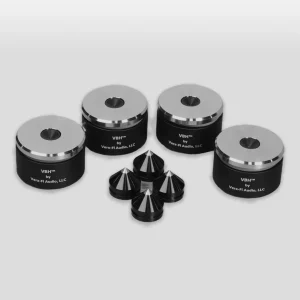
VBH-1 Vibration Reduction Feet ($199) –To quote Mark Schifter, owner of Vera-Fi Audio, he offers “Real Deal Science at a humane price” and, when referring to his VBH-1 Vibration Reduction Feet (aka:”Vibration Black Hole”), he’s spot on with that description. I didn’t expect quite the level of vibration reduction and isolation I got for my idler table until I heard it for myself. The dVBH-1 Vibration Reduction Feet is an “easy lift” for even the most frugal audiophile to use under single or multiple components. (reviewed here Greg Voth)
3 thoughts on "Most Wanted Components 2024"
Leave a Reply
Stereo Times Masthead
Publisher/Founder
Clement Perry
Editor
Dave Thomas
Senior Editors
Frank Alles, Mike Girardi, Russell Lichter, Terry London, Moreno Mitchell, Paul Szabady, Bill Wells, Mike Wright, and Stephen Yan,
Current Contributors
David Abramson, Tim Barrall, Dave Allison, Ron Cook, Lewis Dardick, John Hoffman, Dan Secula, Don Shaulis, Greg Simmons, Eric Teh, Greg Voth, Richard Willie, Ed Van Winkle, Rob Dockery, Richard Doran, and Daveed Turek
Site Management Clement Perry
Ad Designer: Martin Perry


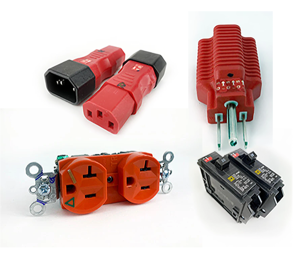



Hello Terry,
I am an audiophile, customer, and lab for Pine Tree Audio. My system is cabled with 100% Pine Tree products. From your enjoyment of the Rainbow Ribbons, I encourage you to try Jesse’s Octave 8 Ethernet cable, and the both the Scorpion, and King Scorpion power cables. They are all transformative.
I agree. I just received a pair of their HexaBraid SPC speakers cables and they are truly magnificent!
They have knocked out speaker cable in my system worth 3 times as much.
Your review of the tekton speakers is spot on accurate.i have several and they are fantastic for any price. I love the new ceramic ulf and the be moab